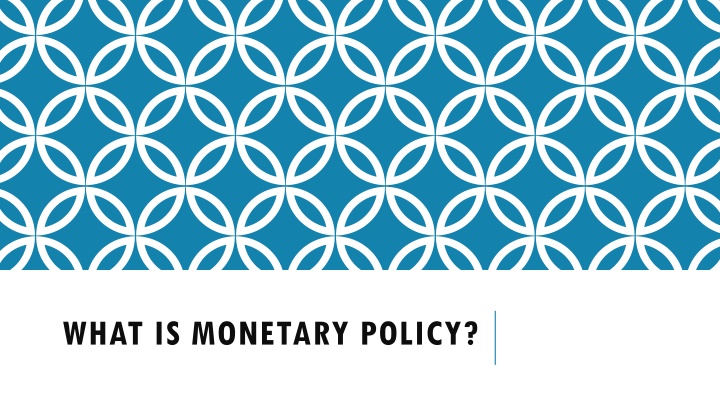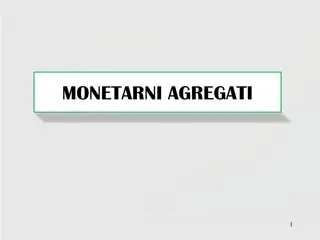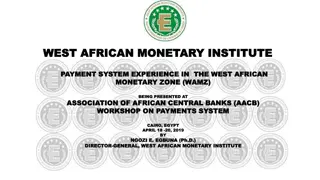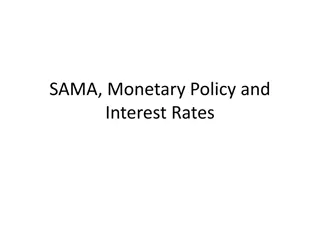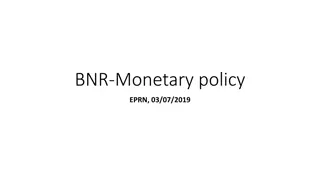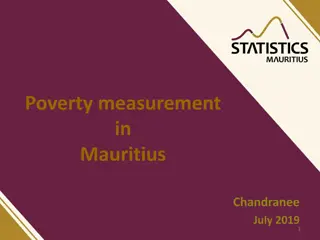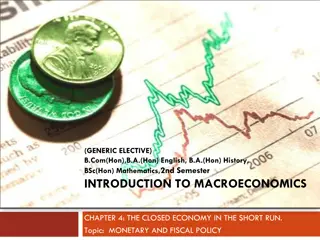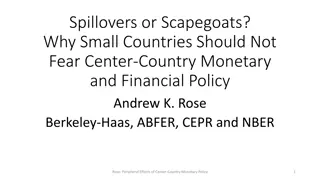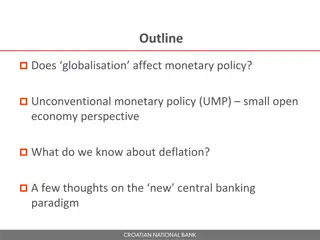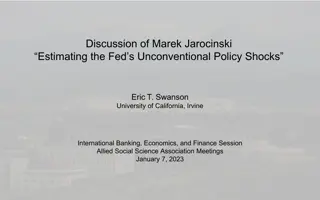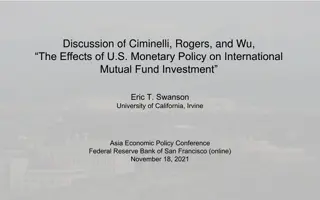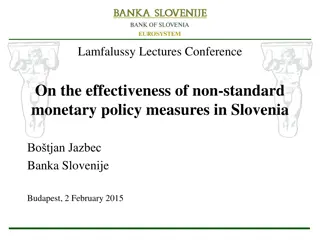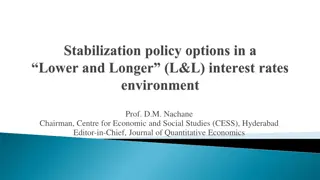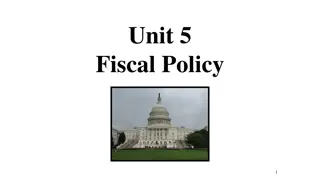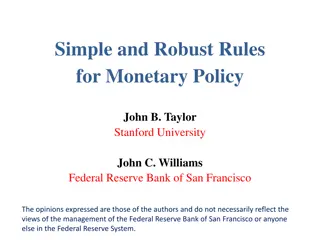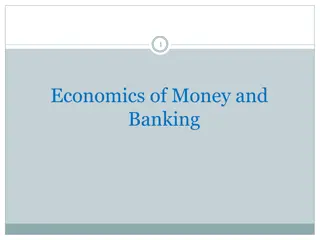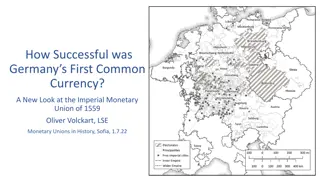WHAT IS MONETARY POLICY?
Monetary policy in India is governed by the Reserve Bank with the aim of managing GDP growth and inflation rates. The Monetary Policy Committee plays a key role in setting policy rates and making decisions to maintain economic stability.
Download Presentation

Please find below an Image/Link to download the presentation.
The content on the website is provided AS IS for your information and personal use only. It may not be sold, licensed, or shared on other websites without obtaining consent from the author.If you encounter any issues during the download, it is possible that the publisher has removed the file from their server.
You are allowed to download the files provided on this website for personal or commercial use, subject to the condition that they are used lawfully. All files are the property of their respective owners.
The content on the website is provided AS IS for your information and personal use only. It may not be sold, licensed, or shared on other websites without obtaining consent from the author.
E N D
Presentation Transcript
WHAT IS MONETARY POLICY? Monetary policy refers to the policy of the Reserve Bank of India with regard to the use of monetary instruments under its control to achieve the goals of GDP growth and lower Inflation rate. The RBI is authorised to made monetary policy under the Reserve Bank of India Act, 1934. Hence monetary policy refers to the credit control measures adopted by the Central Bank of a country.
OBJECTIVES OF THE MONETARY POLICY: Key decisions pertaining to benchmark interest rates used to be taken by the Governor of Reserve Bank of India alone prior to the establishment of the committee. The Governor of RBI is appointed and can be disqualified by the Government anytime. This led to uncertainty and resulted in friction between the Government and the RB1, especially during the times of low growth and high inflation, Before the constitution of the MPC, a Technical Advisory Committee (TAC) on monetary policy with experts from monetary economics, central banking, financial markets and public finance advised the Reserve Bank on the stance of monetary policy. However, its role was only advisory in nature.
COMPOSITION AND OBJECTIVES The 6 member Monetary Policy Committee (MPC) constituted by the Central Government as per the Section 45ZB of the amended RBI Act, 1934. The first meeting of the MPC was held on October 3 and 4, 2016. This committee decides various policy rates like Repo rate, Reverse repo rate, MSF and Liquidity Adjustment Facility etc. Reserve Bank of India (RBI) is the highest monetary authority of India. RBI is authorised to maintain the money supply in the economy as per the requirement of the economy. RBI releases bimonthly monetary policy of the country. The setting up of a committee to decide on Monetary Policy was first proposed by the Urjit Patel Committee. The Committee suggested a five-member MPC three members from the RBI and two nominated by the Government. The Government initially proposed a seven-member committee three from the RBI and four nominated by it. Subsequent negotiations led to the current composition of the committee, with the external members having a four-year term. Monetary Policy Committee came into force on 27th June 2016.
